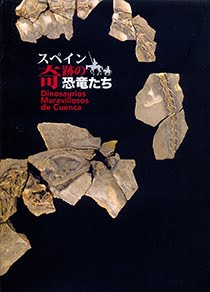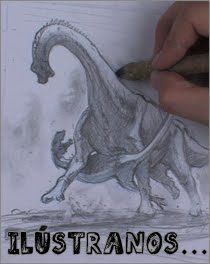En las canteras de Mas de Sabaté (CMP-MS-5) y Mas de Palau (MP-3), dos localidades ricas en fósiles de la Formación Arcillas de Morella (Barremiense) se hallaron los neurocráneos de dos nuevos ornitópodos estiracosternos. Ambos se escanearon mediante tomografía axial computarizada (TAC) y se generaron modelos 3D de sus cavidades internas con el objetivo de conocer las diferencias neuroanatómicas entre ambos ornitópodos. El cráneo CMP-MS-05 se encuentra incompleto habiéndose perdido la parte más anterior. Éste conserva la parte más posterior de los hemisferios cerebrales, la pituitaria, la carótida, así como la vena cerebral caudal media y los nervios N.V, N.X/XI? y N.XII). Por otra parte, el neurocráneo de Mas de Palau (MP-3) se ha preservado en su totalidad siendo identificables los bulbos y tractos olfatorios (N.I), los hemisferios cerebrales, la pituitaria y la expansión dural. Además, también se preservaron y reconstruyeron la mayoría de los nervios craneales y la carótida. Las diferencias más notables se encontraban en la sección de los hemisferios cerebrales, en la expansión dural, la distribución de los nervios craneales más anteriores (N.II-N.III) y en la morfología del nervio XII. Estos dos taxones también se compararon con otros estiracosternos basales como Iguanodon o Mantellisaurus siendo los de Morella no solo diferentes entre sí sino también diferentes al resto. Por tanto, este estudio preliminar muestra que los neurocráneos de los estiracosternos basales son muy polimórficos y, en particular, que ornitópodos de Morella tienen diferencias notables en su neuroanatomía, lo que sugiere que pertenecen a taxones diferentes. El resumen de la comunicación es el siguiente:
We describe the endocast of two new styracosternan ornithopod specimens from the Mas de Sabaté (CMP-MS-5) and the Mas de Palau (MP-3) quarries, two fossil-rich localities from the upper Barremian Arcillas de Morella Formation in Morella (Castellón, Spain). Both neurocrania were scanned using computed tomographic techniques (CT-scan) and 3D models were generated segmenting the individual slices of the braincase and their internal cavities. CMP-MS-05 braincase lacks the anterior part. Its endocast preserves the hindbrain, the pituitary body from which the carotid artery arises, as well as the caudal middle cerebral vein and three of the posterior nerves of the endocast (V, X/XI? and XII). On the other hand, the MP-3 braincase is complete, preserving the olfactory bulbs and tracts (CN I), cerebral hemispheres, pituitary body and dural expansion. Also, most of the cranial nerves and the internal carotid artery were also preserved and reconstructed. Comparisons are difficult because CMP-MS-05 braincase lacks half of the endocast. The specimen from Mas de Sabaté has a more slender hindbrain next to the one from Mas de Palau. Both specimens also differ in the posterior cranial nerves with cranial nerve X/XI? in MP-3 being thicker and having a single exit, whereas the same nerve in CMP-MS-05 is bifurcated and one of them connects with crania lXII. This last nerve (XII) also has different morphology in both, being much thinner in CMP-MS-05 than in MP-3. This preliminary study shows that these ornithopod dinosaurs from Morella have noticeable differences in their endocasts, suggesting they possibly belongs to different taxa.
-----
Más información:
Más información:




























No hay comentarios:
Publicar un comentario